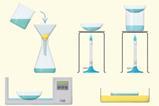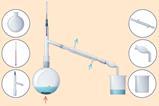Why creativity and play is so important to learning and engaging with science for older children and teachers too

Play is crucial to learning in younger children and is recognised as good practice. But does play, and by extension creativity, have a role in science learning for older children?
Play is crucial to learning in younger children and is recognised as good practice; for example, by Ofsted’s Early years inspection handbook. But does play, and by extension creativity, have a role in science learning for older children?
As a researcher and classroom teacher, play and creativity have always been part of what I do. ‘Play’ can have negative connotations in the rigors of a science laboratory or classroom, with visions of random mixing of chemicals leading to health and safety disasters.
However, play is really about two key ideas. First, learning about new systems or techniques. And second, being creative with what has been learned to discover something new about the world, or a new way to help others learn. Here are two useful examples, one from a student’s point of view and one from mine.
Download this
A microscale approach to the classic ‘Technician in trouble!’ activity. Some solutions have been mixed up – students must use their creativity to work out which is which by planning and carrying out an investigation using only some dropper bottles and a couple of dropping tiles.
Download the student worksheet as MS Word or pdf and the teacher and technician notes as MS Word or pdf.
Being hands on
Titration is a tricky technique to learn because of the wide range of knowledge and skills the student has to attend to. I give my students one lesson just to get to know the new equipment. I demonstrate first, and then give the students licence to ‘have a play’ with the equipment – to learn by doing, talking with their partner, self- and peer-assessing and improving. Then, when they come to do a titration later, that play can be consolidated into skills.
Play has been important to improving my practice and developing new ideas as a teacher and resource developer. One year, in a previous school, I had a non-contact period at the end of the week. That hour became ‘firework Friday’ when my technician and I would ‘play’ with new demonstrations and practicals, get a feel for them, and see how they’d work in the classroom and what learning they would support.
Developing ideas
Equally, I find going into the lab to play important when developing resources. Taking an idea, or an old practical, and experimenting to see if something will work, and learning from the failures. A good example is when I was developing iodine clock reactions. A lunchtime conversation led to the thought: could I do a microscale version? After a couple of hours’ play in the lab, the answer was yes! A microscale version also helps to minimise the hazards of the activity.
Equally, I find going into the lab to play important when developing resources. Taking an idea, or an old practical, and experimenting to see if something will work, and learning from the failures. A good example is when I was developing iodine clock reactions (bit.ly/3bwMCiQ). A lunchtime conversation led to the thought: could I do a microscale version? After a couple of hours’ play in the lab, the answer was yes! A microscale version also helps to minimise the hazards of the activity (bit.ly/38pvE3Y).
Many children see science as a world full of facts to learn, a world in which there is always a correct answer. Whereas we know science as a highly creative field, where skilled practitioners can disagree strongly on how the world works while data is being collected and alternative hypotheses are being tested. We see rocket enthusiasts tinkering with rockets leading to the creation of NASA’s Jet Propulsion Laboratory and teams of scientists and clinicians worldwide developing vaccines against Covid-19 in less than a year.
Many children see science as a world full of facts to learn, a world in which there is always a correct answer. Whereas we know science as a highly creative field, where skilled practitioners can disagree strongly on how the world works while data is being collected and alternative hypotheses are being tested. We see rocket enthusiasts tinkering with rockets leading to the creation of NASA’s Jet Propulsion Laboratory and teams of scientists and clinicians worldwide developing vaccines against Covid-19 in less than a year.
Promote their creativity
What does play and creativity look like in a chemistry classroom? The obvious place is in practical work and in the development of enquiry skills. A popular practical for younger students is to investigate the factors that affect how quickly jelly cubes dissolve. One approach is to have preliminary discussions, identify factors, consider technique, and write plans. An alternative is to let the students play with the equipment and jelly cubes first, allow them to be hands-on to develop their ideas in groups, and then have a class discussion afterwards. I find the latter approach often leads to richer discussions with contributions from more students. Overall, this approach doesn’t take longer because the students tend to be more efficient at collecting their investigation data since they are already familiar with the equipment and methods.

This familiarisation process has similarities with methods to improve practical work up to undergraduate level. Michael Seery from the University of Edinburgh says ‘play has an important role in learning … especially in terms of thinking and experimental design. I think play is also important to scientists as science is innately creative, and a focus on the correct way or endpoint stifles that creativity.’ Michael’s research has led to changes in laboratory practice, with students showing improvements in their investigative skills when techniques and analysis methods were learned first.
This familiarisation process has similarities with methods to improve practical work up to undergraduate level. Michael Seery from the University of Edinburgh says ‘play has an important role in learning … especially in terms of thinking and experimental design. I think play is also important to scientists as science is innately creative, and a focus on the correct way or endpoint stifles that creativity.’ Michael’s research has led to changes in laboratory practice, with students showing improvements in their investigative skills when techniques and analysis methods were learned first (bit.ly/3qsyvzq).
Investigations that develop students’ creativity and problem-solving skills can be used throughout secondary education. For example, when looking at acids, bases and indicators, students can do the classic ‘Technician in trouble! Which solutions are which?’ activity (download a microscale version above). David Read from the University of Southampton said ‘I’ve done this [activity] a few times with sixth formers and it has clearly had students racking their brains to work out what they need to do and how to interpret their observations.’ As with the jelly cube investigation, playing with the solutions first helps to get the students going and helps them plan a more rigorous method.
We do need to be mindful of the sometimes limited success of getting students to understand the processes of how science works just by doing science, without explicitly discussing the processes involved (Kirschner, 1992). However, doing hands-on science certainly helps my students to understand the why and how of the science better.
Give it a go
- Give your students a little ‘play’ time (risk assessed, of course) before they launch into new investigations and concepts.
- Find ways to bring creativity into your teaching of chemistry.
- Think about how play can be used in other areas of the science curriculum, such as role play to learn about the social, environmental and economic impacts of the chemical industry and to think about new concepts from different points of view.
- Read about some of the research and evidence for why playful learning is essential in a secondary classroom, and discover how to add this approach to your teaching toolkit.
Give it a go
- Give your students a little ‘play’ time (risk assessed, of course) before they launch into new investigations and concepts.
- Find ways to bring creativity into your teaching of chemistry. Read ‘Why we need to be teaching chemistry creatively’ by Simon Rees for inspiration: rsc.li/3bArybr
- Think about how play can be used in other areas of the science curriculum, such as role play to learn about the social, environmental and economic impacts of the chemical industry (try activites 602 and 608 from STEM’s Science and Technology in Society resources: bit.ly/3vaSrKy) and using concept cartoons to consider different points of view: rsc.li/3rM0jQw.
Inspired by David Paterson’s approach to teaching chemistry? David’s innovative approach to practical work won him the Royal Society of Chemistry’s Schools Education Award in 2020. If you know someone who’s similarly inspirational and deserves recognition, nominate them for an Excellence in Education Prize from the Royal Society of Chemistry.














No comments yet